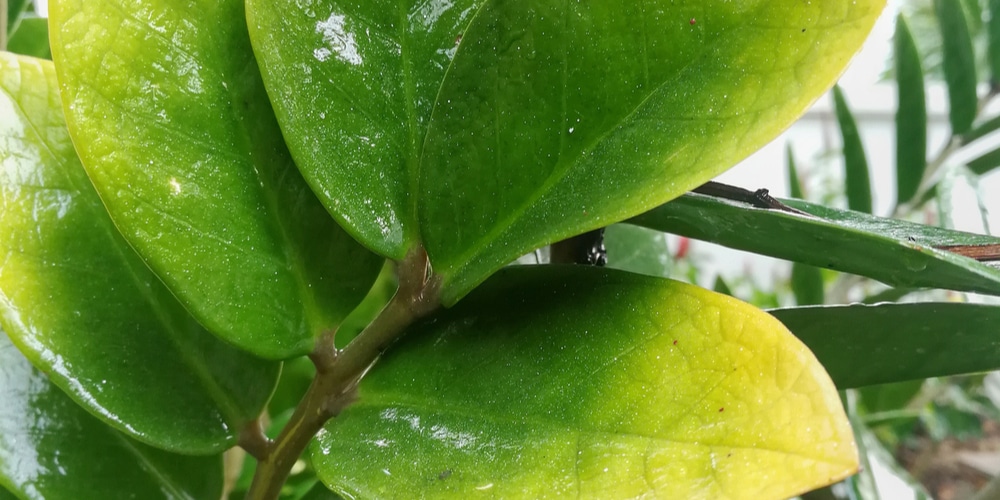ZZ (Zamioculcas zamiifolia) plants are popular houseplants with stunning glossy leaves and unique, interestingly straight stems. They are easy to care for indoor plants that can tolerate neglect but grow into impressive houseplants. With little care, these plants are capable of adding a sense of freshness and green hues to your indoor decor and aesthetics.
While the plant is considered beautiful, you will need to patiently wait for it to mature. If you are looking to own a houseplant but are unsure which one to start with, you can consider the ZZ plants. This article will cover tips for growing ZZ plants and all you need to know about the ZZ houseplants.
Does the ZZ plant grow slowly?
ZZ plants are naturally slow growers. To add, they usually go dormant in cold weather, particularly during winter.
ZZ plants often grow very slowly due to a lack of nutrients or adequate light. Wide temperature fluctuations and varying humidity can also slow down their growth rate.
The ZZ plants (zamioculcas zamiifolia) are characterized by upward-growing shoots that grow up to 6 to 12 inches every month. When mature, they can measure up to 5 feet tall if provided with the ideal growing conditions.
Most ZZ plants will grow 6 to 8 new stems every growing season. Unlike some houseplants that become strong as they grow, the ZZ plants tend to sprout from the soil very strongly during the warm spring season through the hot summer.
When temperature drops in early fall, the ZZ plants progressively slow their growth rate and eventually stop in winter.
Your ZZ plants respond to the care they receive very fast. When provided with all the ideal conditions, it responds by producing new shoots to indicate that the plants are happy.
For this reason, whenever you notice your ZZ plants are not producing any new shoots during the active growing season, check it out to identify what should be supplied to the plant for it to resume active growth.
What to do to slow growing ZZ plants
If you are uncomfortable with the rate at which your ZZ plants grow in spring and summer, you can consider the tips below to make the plants fasten in the growth rate.
Provide adequate light
ZZ plants are known for growing in low light, but this does not mean you deny the plant’s light. The plants may not produce new growth or even thrive when left in low light conditions for a long time.
If you wish to see your ZZ plants grow healthy and greener, you must provide adequate light. The ZZ plants will appreciate bright but indirect light, though they can tolerate about 2 hours of direct sunlight in the morning or evening.
The light intensity changes when you move the plants from room to room; therefore, you can use a light meter app to help you identify if the position where your ZZ plants are has ideal light.
Water the ZZ plants
ZZ plants are relatively drought-resistant but tend to have redundant growth in drier conditions. With adequate water, the ZZ plants will actively grow and produce ideal stems and glossy green leaves.
However, do not overwater the plants because overwatering can lead to root rot, a deadly plant disease. In ZZ plants, root rot will cause the plant to stop growing and eventually die. Water the plants thoroughly after half the pot soil has dried, and wait for it to dry before you water again.
Fertilize the ZZ plants to maximize growth
When supplied with adequate, well-balanced nutrients, the ZZ plants will grow optimally. You can add compost manure or supply the plant with fertilizer every few months. Fertilizing ZZ plants can generate a very big impact on their growth rate.
However, you need to be cautious when applying fertilizer to ensure you do not over-fertilize the plants. Excess fertilizer can damage the roots of ZZ plants, leading to slow growth.
If you are unsure of the type of fertilizer to use, you can try the supplemental water-soluble fertilizer every two months during the active growing season.
Conclusion
If you are a first-time owner of the ZZ plants, it is important to know that they grow slowly. However, when the growth rate tends to be too slow, you can check on what the plant is missing and try to provide so that your ZZ plants can resume their active growth rate.

